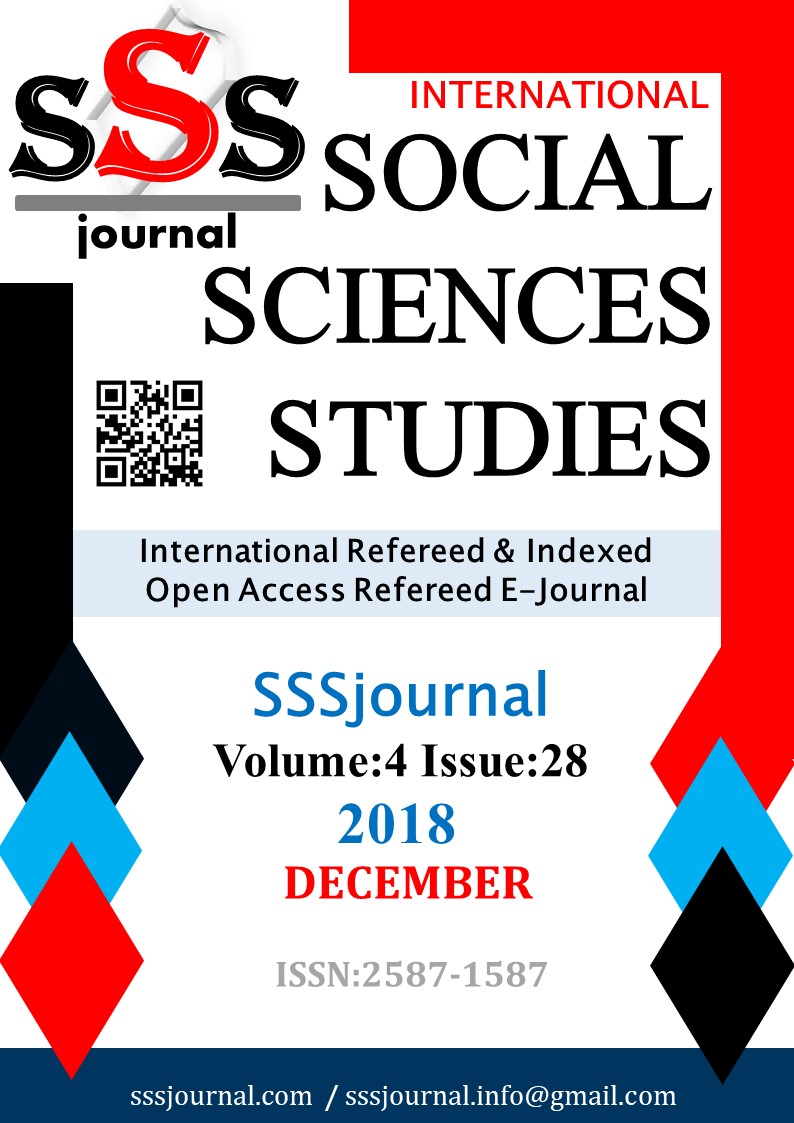Author :
Abstract
Bu araştırmanın amacı, farklı branşlardaki sporcuların spor karakter özelliklerinin karşılaştırılması ve çeşitli değişkenlere göre spor karakter özelliklerinin anlamlı olarak farklılaşıp farklılaşmadığını tespit etmektir. Araştırmanın çalışma grubunu, İstanbul ilinde faaliyet gösteren bir spor okulunun atletizm, yüzme, su topu ve tenis branşlarında olasılık dışı örnekleme yöntemiyle seçilmiş 56 “Erkek”, 24 “Kadın” olmak üzere toplam 80 sporcu gönüllü olarak katılım sağlayarak oluşturulmuştur. Araştırmada veri toplama aracı olarak; Jang (2013) tarafından geliştirilen, Görgüt ve Tuncel (2017) tarafından Türkçeye uyarlanan “Spor Karakter Ölçeği (SKÖ)” kullanılmıştır. “Spor Karakter Ölçeği” 5’li likert tipinde 27 madde 5 alt boyuttan oluşmaktadır. Verilerin değerlendirilmesinde istatistiki yöntem olarak; frekans, aritmetik ortalama, standart sapma kullanılmıştır. Yapılan normallik testinde verilerin normal dağılım göstermediğinin anlaşılmasından sonra analizler non-parametrik testler Mann-Whitney U ve Kruskal-Wallis testleriyle analiz edilmiştir. Araştırma sonucunda; sporcuların yaş gruplarına göre spor karakterler özelliklerinde anlamlı olarak farklılaşma tespit edilemezken, sporcuların branşlarına göre spor karakter özelliklerinde anlamlı farklılıklar tespit edilmiştir.
Keywords
Abstract
The purpose of the study is to to compare the sports character features of athletes in different branches and to determine whether the features of sports character differ significantly according to various variables. The study group of there search consists of 56 “Male” and 24 “Female”; a total of 80 volunteer athlete who sport in the field of athletics, swimming, water polo and tennis in a sports school in Istanbul. “Sports Character Scale (SCS)” , which was developed by Jang (2013) and was adapted to Turkish by Görgüt and Tuncel (2017) were used as data collection instrument. Sports Character Scale consists of 5 sub-dimensions 27 items and 5-point likert. As a statistical method in the evaluation of data; frequency, arithmetic mean, standard deviation are used. The test of normality was applied to identify whether the data has a normal distribution. As a result of this test, it was understood that obtained data was suitable for non-parametric conditions, after that data was analyzed through the test of Mann-Whitney U and Kruskal-Wallis test. In conclusion, in the sports character features of athletes in terms of age groups were not found significantly the differences, whereas in the sports character features of athletes in terms of their branches were significantly found the differences
Keywords
- AKKİPRİK, G. B. (2007), Genel lise öğretmenlerine göre karakter eğitimi yoluyla öğrencilere
- AKKİPRİK, G. B. (2007), Genel lise öğretmenlerine göre karakter eğitimi yoluyla öğrencilerekazandırılacak değerler: Çok boyutlu bir araştırma, Yüksek Lisans Tezi, Yeditepe Üniversitesi Eğitim Bilimleri Enstitüsü, İstanbul
- BATTISTICH, V. (2005), Character education, prevention and positive youth development, University of Missouri – St Louis
- BERKOWİTZ, M.W. (1999), Obstacles to teacher training in character education. Action in Teacher Education, 20 (4).
- CAMİRE, M. & TRUDEL, P. (2010), High school athletes perspectives on character development through sport participation, Physical Education And Sport Pedagogy 15(2): 193-207.
- COULOMB-CABAGNO, & RASCLE, O. (2006), Team sports player’ observed aggresion as a function of gender competitive level and sport type, Journal of Applied Social Psychology, 36(8), 1980-2000
- ÇATALBAŞ, M. (2018), Okul öncesi eğitim programındaki karakter eğitiminin incelenmesi ve okul öncesiöğretmenlerinin karakter eğitimi hakkındaki görüşleri, Yüksek Lisans Tezi, Kahramanmaraş Sütçü İmam Üniversitesi Sosyal Bilimler Enstitüsü Eğitim Programları ve Öğretim Anabilim Dalı, Kahramanmaraş
- DAVIDSON, M.L., MORAN-MİLLER, K. & BEEDY, P. (2004), Performance and moral. Character: a blueprint for developing character in competitive contexts. Center fort he 4th and 5th Rs. 1-23
- DURAN, A. (2015), Okul öncesi çocuklarının karakter ve karakter özelliklerine ilişkin veli ve öğretmengörüşlerinin incelenmesi, Yüksek Lisans Tezi, Dumlupınar Üniversitesi Eğitim Bilimleri Enstitüsü İlöğretim Anabilim Dalı Okul Öncesi Bilim Dalı, Kütahya
- GÖRGÜT, İ. ve TUNCEL, S. (2017). Spor Karakter Ölçeğinin Türkçeye Uyarlanması, SPORMETRE, 15(3), 149-156
- GÜRPINAR, B. ve KURŞUN, S. (2013), Basketbolcular ve futbolcuların sportmenlik yönelimleri, Mediterranean Journal of Humanities, 171-176
- İMAMLI, H. ve ÜNVER, G. (2018), Spor karakterinin demografik nitelikler açısından incelenmesi, Akdeniz Spor Bilimleri Dergisi, 36-48
- JANG, C. (2013), Development and validation of the sport character scale, Department of Exercise and Sport Sciences The University of Utah
- ÖZTÜRK, S.E. ve TÜRKMEN, M. (2018), Dart sporcularının spor karakterlerinin incelenmesi, 6. Uluslararası Bilim, Kültür ve Spor Kongresi, Lviv Ukrayna
- SIRRI, V. ve MEHMEDOĞLU, A.U. (2015), Karakter eğitimi: dün, bugün ve yarın, Tarih, Kültür ve Sanat Araştırmaları Dergisi, 121-144
- WEİSS, M.R., SMİTH, A.L. & STUNTZ, C.P. (2008), Moral development in sport and physical activity: theory, research and intervention. Advances in sport psychology, 187-210
- YETİM, A.A. (2000), Sporun sosyal görünümü, Gazi Beden Eğitimi ve Spor Bilimleri Dergisi, 63-72 YETİM, A.A. (2016), Sporda Etkili İletişim, Spor Yayınevi ve Kitapevi, Ankara
- www.tdk.gov.tr (erişim: 20.11.2018)





